We’re just four months into 2009 so it’s obviously time for some newer than new products to be launched. Fox have plenty of new tricks up their sleeve for the coming season with some fairly major changes to their fork and shock lineup. Our intrepid reporter escaped Britain to swan off to sunny California to have a look and a play on them as well as tooling about in the louder and exciting petrol powered things Fox make shocks for, including Baja race cars and a OEM deal with Ford for their new SVT F-150 Raptor which was doing the rounds. Doing 90mph or so on dirt roads in a car (truck?) with leather seats and air con is just as entertaining as you’d imagine. Along with all the petrol powered stuff it’s pretty obvious Fox are into developing their bicycle fork and shock range in cahoots with a large number of supported racers and teams. 2009 was a pretty good year for them with World Championship winning downhillers Rachel and Gee Atherton on Fox kit.
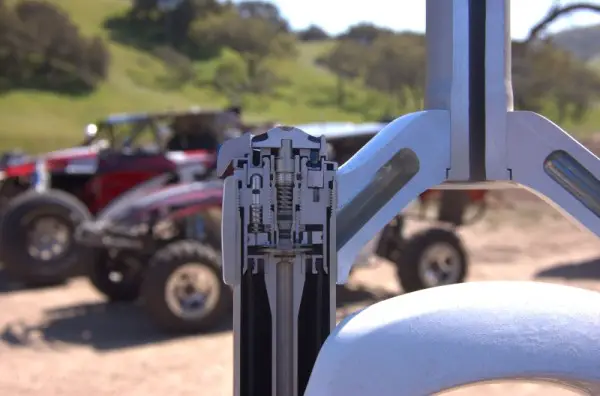
The time and effort spent with top downhillers is starting to pay dividends even for the cross country range in the new Float RP shocks. For 2010 the top end models have been redesigned to incorporate Fox’s position sensitive Boost Valve technology previously seen on the DHX range of shocks. The valve controls the end stroke of the shock and this means the natural ramp-up of the air spring is more progressive and the bottom out is much less noticeable, leading to a more “bottomless” feeling when taking large hits. The Boost Valve also affects the way the Pro-Pedal works, making the shock have much less of a “trapdoor” feeling as you pass through the Pro Pedal damping. We rode Yeti 575s equipped first with 09 shocks and forks and then refitted with the 2010 kit and despite new trails on a new bike, the overall feeling of control is noticeably better. As well as taking big hits in a much more refined manner the shock has a much smoother transition through the travel if you leave the Pro Pedal on while descending, with the sensation of plunging into the mid stroke almost eliminated. Better control of end stroke damping means there’s less need for the high volume air sleeves sometimes seen on Float shocks too – the damper takes care of the end stroke so the air spring doesn’t have to.
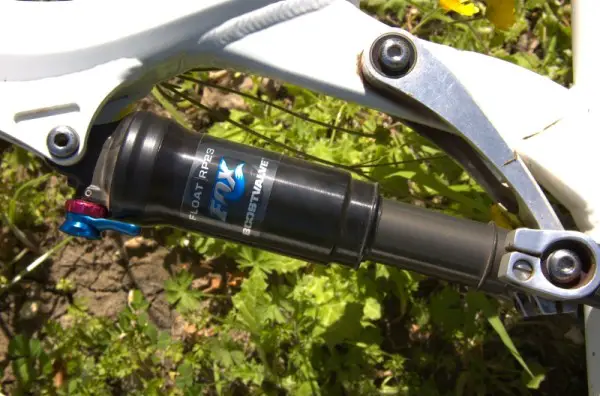
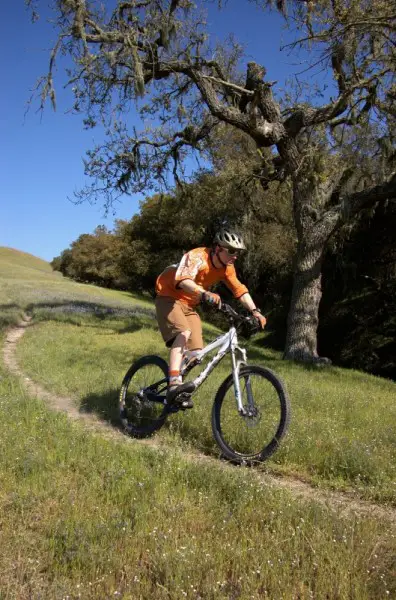
The top of the range RP23 comes with the three position Pro Pedal range adjuster and on/off switch with a slightly redesigned lever as well as the Boost Valve. The RP2 is also available with the Boost Valve technology. Both shocks will be offered OEM with or without the Boost Valve option but expect to see a large number of companies speccing their frame designs with one – it’s a very good way to get around the limitations of some suspension designs. The Float RP and RPL remain unchanged from 09 which is good news for those thinking of buying cheaper full sussers as the Boost Valved RPs will go up in price due to the extra complexity.

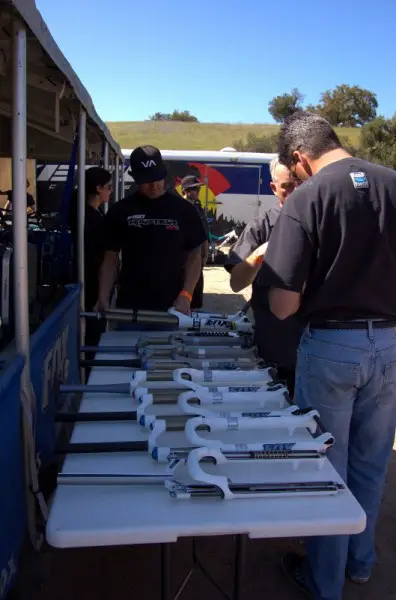
Brand spanking new and of interest to anyone with a big bouncy bike made for throwing down hillsides are the DHX RC4 and RC2 shocks. Designed entirely from scratch, the shocks incorporate technology taken from Fox’s moto and ATV range and the RC4 now has separate high and low speed compression damping circuits and adjustment. The way the Boost works is more than enough to cope with the range of useable adjustment needed on a mountain bike. I didn’t get chance to ride the new shock but I’m quite excited to see how it fares against the newest generation of coil sprung shocks and the old DHX 5.0. There is also a RC2 version which won’t have the high speed compression adjuster or the bottom out progressiveness adjuster, although the bottom out force can be adjusted via a Scraeder valve.
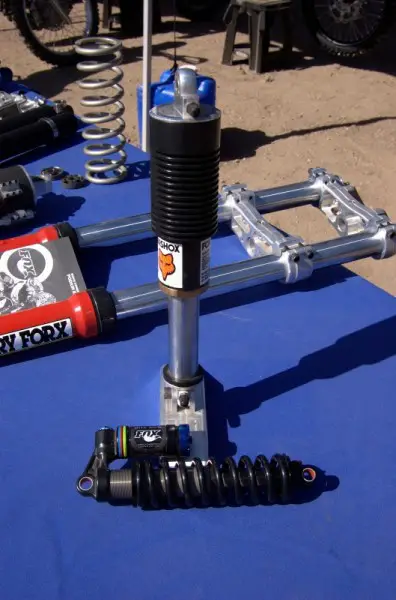
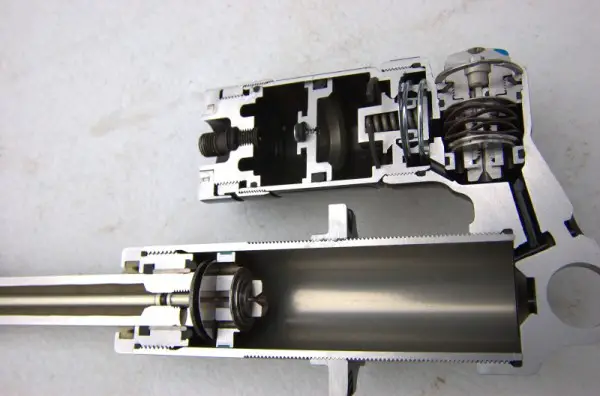
The DHX 5.0 Air stays the same apart for a redesigned Pro Pedal lever which now moves from fully on to fully off in 90 degrees of ergonomically designed joy. As an aside for those with DHX 5.0 coil shocks it is possible to fit this switch instead of the time consuming multi-step adjuster but it’s not a job for the home mechanic – it’d be nice to see though.
The 32 fork range has also undergone a bit of a makeover with the FIT (Fox Isolated Technology) cartridge damper now being used in the top end forks. The FIT damper has a number of advantages over the open bath designs, being less exposed to dirt and dust and less chance of damping fluid aeration so the damper stands up to heavy use without losing any performance. Out on the test track it meant that the fork is quieter in operation and can put up with sustained use without the damping getting that vague feeling as the oil gets churned about. From outside the obvious difference in the new forks is that the rebound control has moved to the bottom of the fork leg and where the old rebound adjuster used to be on the there is now a black dial which controls the lockout force threshold. The levers have been designed to be more finger friendly and the low speed compression adjustment has a wider range than the forks of old. The only drawback of the FIT cartridge that I can think of is that it’s not user serviceable – the cartridge is filled in a vacuum to make sure no air can get in – but the sealed design means oil changes should be less frequent and the oil that is loose in the legs is purely for lubricating the seals rather than being used for damping as well. The FIT cartridge knocks 71g off the RLC forks and 67g off the RL.
All the 32 forks including the 29er range are available with the 15QR system which can only be a good thing as it’s stiffer than a QR, faster to use, much more secure and the weight difference is minor. The 32 Float and TALAS forks now have a 150mm travel option as well as 1 1/8th to 1.5in taper steerer options although the Vanilla stays at 140mm. The range will have the new FIT damper in the top end FIT branded RLC and RL forks but cheaper open bath RL and R forks will be available for those on a budget.
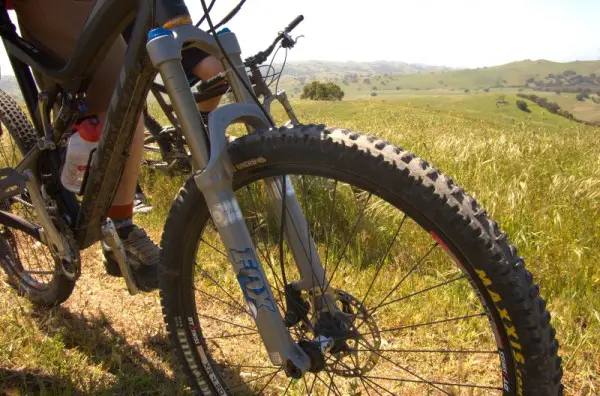

The XC racers choice F-Series forks have been slimmed down even further with redesigned lowers, legs and crown to take them down to the weight of the competition – a 100mm travel 32 F-FIT RLC will now weigh in at 3.15lbs with a 9mm QR dropout or 3.38lbs with a 15QR.
The 36 and 40 forks stay the same for 2009 but expect a price increase across the range, especially on the new Boost Valved Floats and FIT 32s. I didn’t have any figures but the DHX RC4 is going to be quite a bit more expensive than the DHX 5.0 but considering the extremely complex design (see cutaway pic if you’re in doubt) that’s not too surprising.
Fox say they’re making the new forks and shocks now, so expect to see them fitted to bikes from May onwards and available in the shops from a similar time.
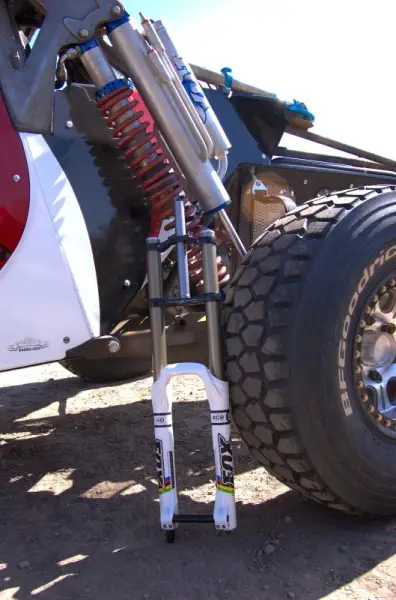
If you can’t wait for a DHX RC4, Mojo have a limited number of numbered World Cup Edition 40 forks and RC4 shocks available as a package including tuning for a mere £2,300 or so. Credit crunch? Where exactly?
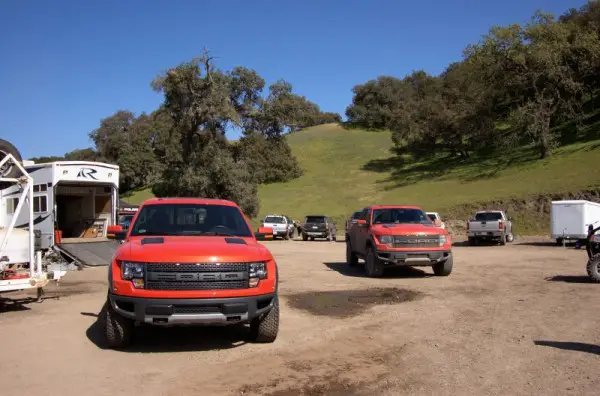
Fox Facts:
Bob Fox quit his engineering job to become a professional poker player before setting up Fox Shox and making the first MX air shock with his winnings.
An early competitor in the MX world for Fox was Curnutt, they of the foot long shocks you see on Foes bikes nowadays.
Indy Car champ Mario Andretti wanted custom racing shocks made by Fox for his car. He wanted them for free as he was a bit famous but due to the downturn in the MX market they needed the money. He paid them.
Indy Cars were where on the fly damping adjustment was developed – as the car uses fuel it gets lighter so they needed to tweak it while they were racing.
Bob Fox has the same excellent moustache now as he has when he started the company in 1980.
People backflip snowmobiles nowadays. They use Fox shocks too.
Comments (13)
Leave Reply
Post Comment
PROGRESSIVE AND REAL ENGINEERED SOLUTIONS – FOX ARE A FORWARD THINKING COMPANY – GOOD TO SEE SUCH EXCELLENT COVERAGE SINGLETRACK – THANKS 🙂
You go to california and all I get is an informative report…….
Hmmm, cartridge dampers. Looks like my 15 year old Judy with Speed Springs and a damping cartridge is cutting edge technology again.
You go to california and all I get is an informative report…….
I think there’s some Youtube videos of them all arsing around in dirt buggies if you want the real story 🙂
Did you try smearing some mud on them and seeing how long it took before tey needed servicing 😉
I actually just drooled a bit! not sure wether it was looking at the RP23 boost that did it or just a left-over bit of easter egg stuck in my mouth. probably the easter egg 🙂
Was just about to buy a 2009 RP23 but think I might hold off now. Mind you with the words price increase noted it might end up a good bit more expensive.
Despite the monumentally high price of Fox kit, it’s good to see that they’re still night and day ahead of the competition in terms of engineering.
Although the lack of servicability of the ‘new’ cartridge damper is a bit of a bummer.
Does it really have to be this complicated to ride a bicycle off road? I’m an engineer, and love the progressive application of technology, but I really do have to ask if this might be a bit OTT for 99.9% of people?